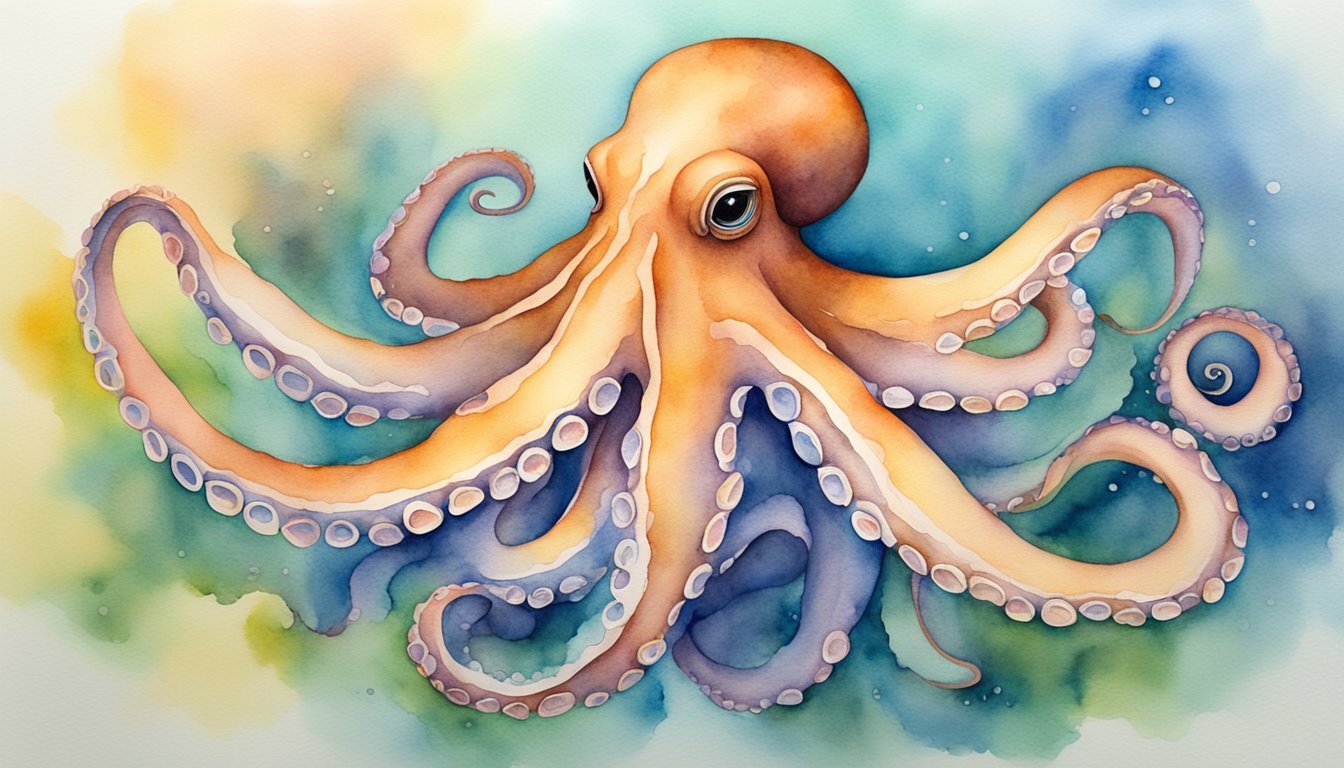Anatomy and Function of Octopus Hearts
The octopus, a fascinating marine animal, possesses a unique set of organs that includes three hearts. Each plays a specific role in their survival, showcasing a complex circulatory system unlike any other in the animal kingdom.
Understanding the Three Hearts
The octopus has three hearts: a systemic heart and two branchial hearts. The systemic heart is responsible for pumping oxygenated blood throughout the body, while the two branchial hearts pump deoxygenated blood specifically to the gills for reoxygenation.
Circulatory System and Blood
Octopuses exhibit an advanced circulatory system, where the copper-containing protein hemocyanin transports oxygen in their blue blood. Unlike humans, their blood uses copper for oxygen transport, giving it a distinctive blue color. This system is efficient for an octopus’s life underwater, where temperatures and oxygen levels can vary.
Respiration and Gills
Respiration in octopuses occurs as deoxygenated blood travels to the gills via the branchial hearts. Here, the exchange of oxygen and carbon dioxide takes place. Oxygen binds to hemocyanin in the blood, turning it from clear to blue, which then gets circulated by the systemic heart to nourish the body.
Octopus Physiology and Behavior

Octopuses are fascinating creatures with unique physical and behavioral traits that have adapted them well to oceanic life.
Locomotion and Energy
Octopuses propel themselves by expelling water from their mantles through a funnel-like siphon, a process that relies heavily on their muscular structure and energy management. The giant Pacific octopus, for example, utilizes its muscular prowess to move swiftly when escaping predators or pursuing prey, but such exertion comes at a cost. Rapid swimming can rapidly deplete an octopus’s energy reserves, necessitating a balance between rest and activity.
Neural and Sensory Abilities
The bulk of an octopus’s neurons are located in its arms, well beyond its central brain, which enables extraordinary control over its suckers and camouflage capabilities. Octopus brains are large for a mollusk, facilitating complex behaviors such as navigating mazes and remembering solutions to problems for extended periods. Their nervous systems are among the most complex in the invertebrate world, allowing them to interact with their environment meticulously and thoughtfully.
Adaptation and Survival Strategies
The ability to change color and texture enables octopuses to seamlessly blend into their surroundings, making them formidable ambush predators for prey like crabs and shrimp. When faced with threat, they can expel ink as a decoy to distract predators, a classic example of cephalopod adaptability. Octopuses are solitary creatures, often residing in dens made from rocks or coral. As environmental conditions shift due to climate change, octopuses and their behaviors may also evolve, indicative of their ability to adapt to changing habitats and circumstances.

